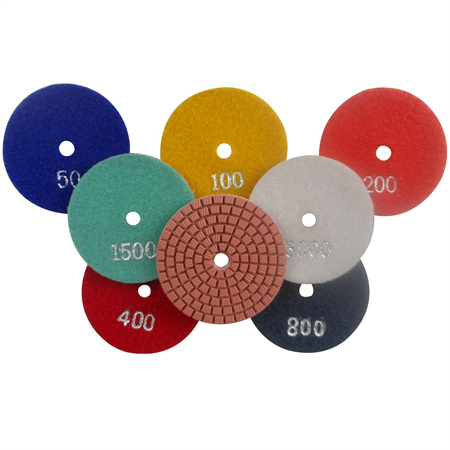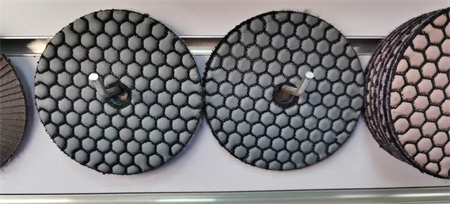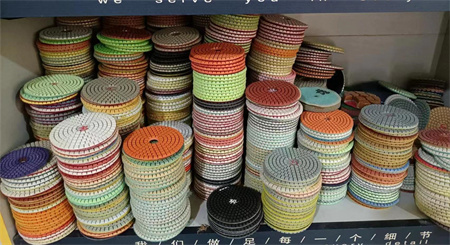Top Polishing Pads for DIY Projects vs. Commercial Use

For DIY enthusiasts, polishing pads are often seen as a way to bring a personal touch to home improvement projects. Whether you’re restoring the paint on your car, refinishing furniture, or even polishing countertops, a DIYer needs pads that are user-friendly, versatile, and cost-effective. Commercial use, on the other hand, demands a higher level of durability and precision. Professionals rely on polishing pads that can withstand hours of continuous use, offer consistent results, and handle a range of tough surfaces, all while maintaining high efficiency.
DIY Projects: The Need for Flexibility and Ease of Use
For the average DIYer, the primary concern is ease of use. Most DIY polishing jobs are limited in scope—usually focused on restoring or enhancing a particular surface, such as a car or a piece of furniture. Polishing pads designed for DIY projects tend to be softer, more forgiving, and designed for lighter, less frequent use. Many DIYers will opt for foam pads, which are gentler on surfaces and provide a smooth finish without the need for excessive pressure or complicated techniques.
Foam pads come in different grades, from soft to firm, and are versatile enough for a range of tasks. Soft foam pads, for example, are great for polishing delicate surfaces like painted cars or glossy furniture, while medium to firm pads are better suited for removing oxidation or deeper scratches. These pads are often used with orbital polishers, which are also popular among DIYers due to their ease of handling and safety features.
Another appealing feature for DIY users is affordability. Since DIY projects tend to be more sporadic, there’s less of a need for heavy-duty, long-lasting pads that professionals require. Foam polishing pads are generally less expensive and can be replaced easily when they start showing signs of wear.
For many DIYers, versatility is key. A polishing pad that can handle multiple tasks—whether it’s buffing, polishing, or removing imperfections—offers good value. Additionally, for those just starting out, pads that come with clear instructions and are compatible with standard, widely available tools (like orbital polishers) are a big plus. This combination of affordability, ease of use, and adaptability makes foam polishing pads the go-to choice for the average DIYer.
Commercial Use: Durability and Precision
In a commercial setting, where polishing is often a high-volume, high-intensity job, professionals require pads that are built to last under continuous use. Whether it’s a high-end detailing shop, an auto body repair center, or a manufacturing plant, commercial users are looking for efficiency, durability, and consistency. In these environments, polishing pads are expected to handle tougher surfaces, heavy-duty work, and long hours of polishing without degrading.
The most popular choice for commercial use are microfiber pads. These pads are more durable and can withstand much higher levels of heat and friction. Microfiber is effective at cutting through rough surfaces, such as old paint, oxidation, or rust, and is typically used in more aggressive polishing tasks. The dense fibers in microfiber pads also hold polish more efficiently, meaning professionals can achieve a cleaner, more precise finish in less time.

Besides the material, another important factor in commercial-grade pads is their ability to handle heavy-duty applications without degrading quickly. This is particularly important for professionals who work on a variety of surfaces, from vehicles to machinery, all of which have different polishing requirements. Commercial pads are designed to maintain their performance even after hours of continuous use.
Choosing the Right Pad for the Job
While DIYers and commercial users have different needs, the underlying principle remains the same: selecting the right polishing pad can drastically improve the outcome of your project. For DIYers, choosing a soft, flexible foam pad for light-duty tasks like polishing a car or buffing a countertop is usually sufficient. The key is finding a pad that complements your level of experience and the scope of the project.
For commercial users, the focus should be on pads that offer high durability, precision, and the ability to perform well under pressure. Microfiber pads are generally the preferred choice for those in high-demand industries due to their ability to deliver a flawless finish on tough surfaces.
Ultimately, the decision between DIY and commercial polishing pads boils down to the nature of the task at hand. Whether you’re polishing your car for the first time or managing a fleet of vehicles for a business, selecting the right pad will ensure that you get the job done with the desired results.
